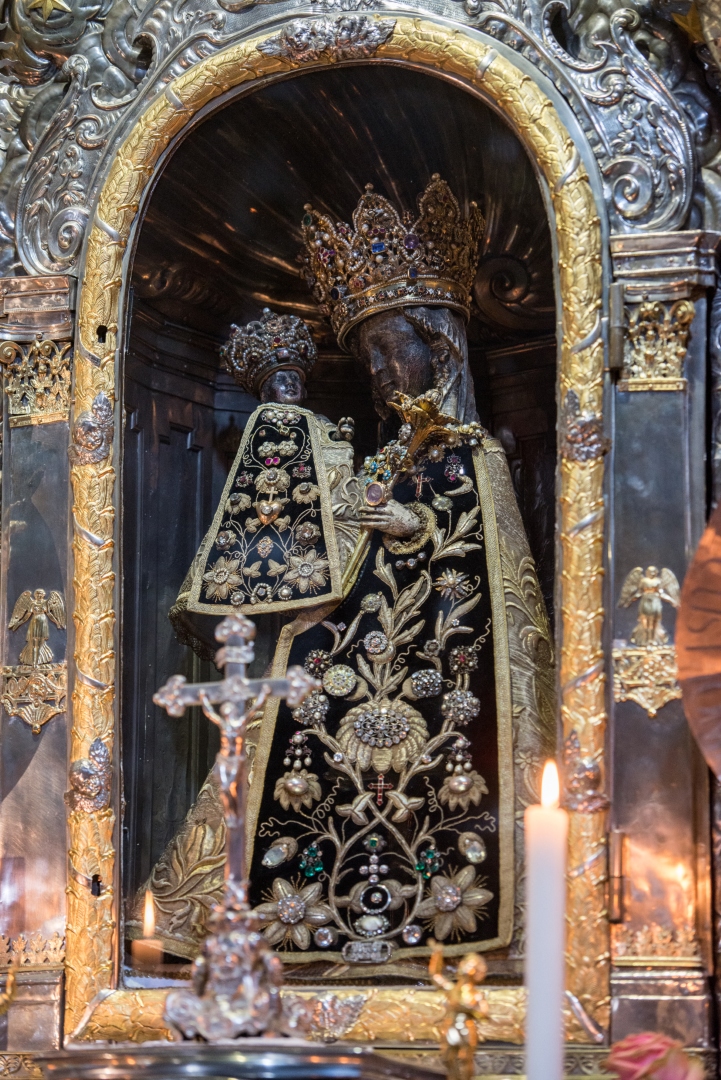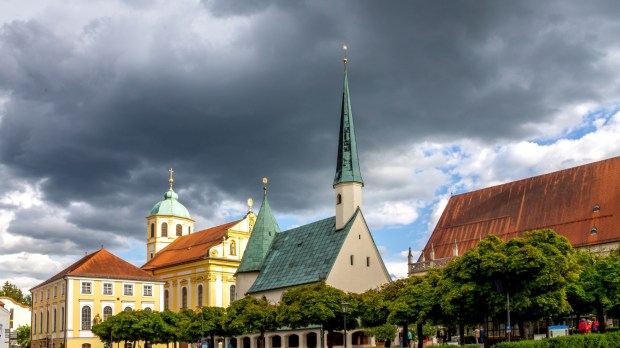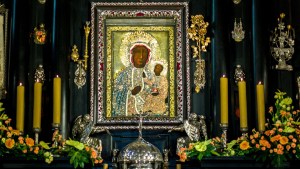The Church of Our Lady of Altötting was, and still is, a relatively well-known place of pilgrimage – at least, among European Catholics. Located in the small town of Altötting, in southeastern Germany, the church houses a miraculous image of the Madonna and Child that has drawn pilgrims for centuries. Also known as the Gnadenkapelle (German for “Chapel of Grace”), it is the national shrine of Bavaria. The late Pope Benedict XVI, who was born in a nearby town, considered the shrine his “spiritual homeland.”
The history of the church dates to the 8th century when St. Rupert, the patron saint of the Archdiocese of Salzburg, is said to have established a chapel at the site. Over the centuries, as is often the case with European medieval churches, the chapel was rebuilt and expanded, and in the 14th century, a Gothic church was erected on the site. In the 16th century, the church was finally renovated in the Baroque style, with a magnificent high altar and ornate decorations.

The church’s most famous feature is the Black Madonna, a wooden statue of the Virgin and Child, which the faithful consider especially miraculous. According to local pious traditions, the statue was discovered by a shepherd boy in the 13th century and was brought to the church, where it became a focus of devotion and pilgrimage. The miraculous image, as is the case with other famous Black Madonnas (Czestochova, Montserrat, et al.) is venerated by Catholics from all over the world. In fact, Our Lady of Altötting draws thousands of pilgrims every year, and is particularly popular among German Catholics, who make up most of the visitors.
Benedict XVI and Our Lady of Altötting
Shortly after his election as pope, in September 2006, Benedict XVI visited the shrine and left there the episcopal ring he had worn as archbishop of Munich. The ring is an amethyst set in gold, given him by his two siblings on the occasion of his episcopal ordination in Munich in 1977. It now forms part of Our Lady’s scepter.
In his homily at a Mass he celebrated at the site, Benedict offered this reflection:
Mary leaves everything to the Lord’s judgment. At Nazareth she gave over her will, immersing it in the will of God: “Here am I, the servant of the Lord; let it be with me according to your word” (Lk 1:38). And this continues to be her fundamental attitude. This is how she teaches us to pray: not by seeking to assert before God our own will and our own desires, however important they may be, however reasonable they might appear to us, but rather to bring them before him and to let him decide what he intends to do. From Mary we learn graciousness and readiness to help, but we also learn humility and generosity in accepting God’s will, in the confident conviction that, whatever it may be, it will be our, and my own, true good.
The region around Altötting has a pilgrimage walking path dubbed the Benedict Trail, connecting the places where the late Pope Benedict XVI spent his childhood and youth.



